|
|
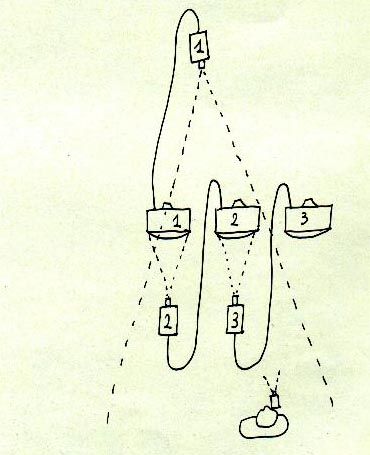
INPUT - OUTPUT (1)
Each and every film is the recorded history of how it was actually made;
it shows nothing and reproduces nothing, either.
Peter Gidal Theory and definition of structural/materialist film.
I once again ask myself: can one identify film or video matter with the filmed object itself? If so, how?
It was for example structural cinema that tried to prove such identification impossible by simply identifying a film with a film. In a film, what you record automatically becomes objectified, which is dictated by the material itself. Treating a film as just yet another thing among other things is both logical as well as paradoxically natural. Each and every thing constitutes its own history of creation; it shows nothing and reproduces nothing, either. These are the very roots of minimal art. If one after all does try, however, to focus on what the film reproduces and it turns out that the film reproduces another film which in turn reproduces yet another one, only then can we realize the very futility of our attempts to trace the reality in the recording. These are hindered by the complex issue of time.
As a subjective form of perception is exactly how time should be interpreted here in this text.
Time engulfed by time is the main idea behind William Raban's '2'45'. His filming is symultaneous, with no need for copying. Hence, his time layers function as alternating negatives and positives.
There exist similar convertions, though from a positive to a positive, in David Hall and Tony Sinden's 'Between' or in Peter Weibel's video 'Endless Sandwich'. I myself have also made films of the sort, such as ex. a film/performance 'Points'.
All these works make us acutely aware of how complex time really is and enable us to experience this fully. Let me add that the above-mentioned artists tried to slow down those time permutations so that the viewers could notice them. A live transmission is apparently devoid of any time permutations at all. Time in a film and video recording, at least as far as their referential layers are concerned, always belongs to the past, and consequently it is in its nature concrete, something that has already happened. Is a thing. A live transmission functions synchronously, at the very moment, and so the process of objectification is fairly imperceptible. A live transmission happens right before our very eyes at each and every moment. We can confront it directly with the reality. The question is whether we can do it synchronously. The very difference between the actual time and the time passed has been significantly reduced, yet has it been eliminated ?
The first transmission is as concrete for the second transmission as the screen itself with everything that surrounds it. The second transmission performs the same function for the third one. All the transmissions can be objectified, one by one. Most importantly, every instance of this means returning both to the world of things which is being reproduced as well as the present time.
In such an installation every transmission contains an element of the present time entwined in the unobtrusive chain of the past.
I find it rather difficult to conceive what will be happening with the time in the umpteenth transmission, although I can visualize
it.
| |



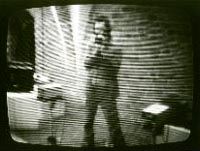
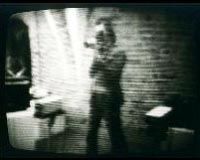
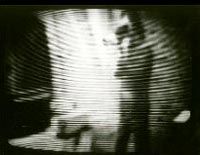
INPUT - OUTPUT
Video Installation
made at 'Photography As a Tool
/ Video As a Tool' ,
Wrocław, Foto Medium Art Gallery.
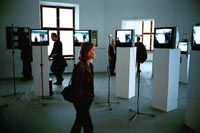
.. and during exhibition
Warsztat Formy Filmowej
CSW, Warszawa 2000
|